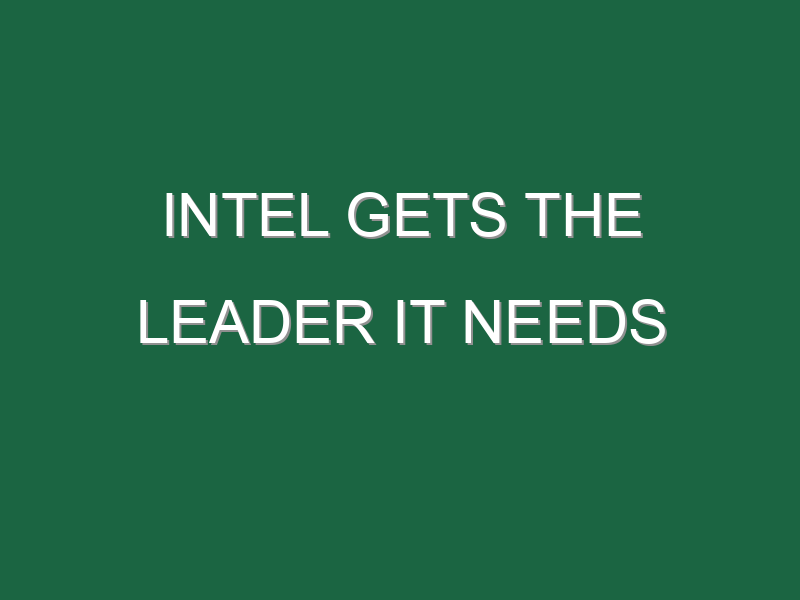This is the web version of Data Sheet, a daily newsletter on the business of tech. Sign up to get it delivered free to your inbox.
In what may be the least surprising tech news development of 2021 so far, Intel announced on Wednesday morning that CEO Bob Swan is leaving and will be replaced by VMware CEO Pat Gelsinger.
It’s a tough break for Swan, the former CFO who had a long and illustrative career in finance before ending up as the surprise pick for CEO at Intel almost exactly two years ago. While all of Intel’s previous CEOs, starting with Robert Noyce in 1968, had a background in engineering and science, Swan was an MBA whose career motto was “finance is not about counting the beans—it’s about helping the beans grow.” You can forgive Intel’s board, which was not successful in recruiting some more high-profile tech execs to take the job, for thinking that a leader with a completely different skill set might be the answer.
Turns out, it was not.
Swan took over a troubled giant, as Intel was struggling to perfect new technology to squeeze more transistors onto each processing chip. A push to moving from a scale of 14-nanometers to 10-nanometers, microscopic spacing that would allow for billions more transistors per chip, was already several years late when Swan took over. Cracking the whip, he reorganized the company and tried to ferret out the problems. Soon enough, the new CEO developed a promising narrative: Intel had tried to improve too much too quickly in the transition to 10-nanometers. The company wouldn’t make the mistake again, as it sought to pack even more transistors per chip at a scale of 7-nanometers next, Swan promised.
Then came the shocking announcement in July that Intel had fallen behind schedule on the 7-nanometer transition. As I exclaimed here at the time, what the hell just happened to Intel? But there were some warning signs, including the sudden departure of chip design star Jim Keller and Apple’s decision to abandon Intel chips and rely on its own silicon for future Macs.
Gelsinger marks a return to a more technically savvy leader at Intel. The hire must be immensely satisfying for Intel, as Gelsinger’s accession represents a return of the one-time boy wonder who grew up at the company but left to find a leadership post elsewhere and turned away overtures to run the business two years ago before Swan got the job.
Gelsinger started his career as a quality control technician at Intel, a job that helped pay for him to go to college. As we explained in Data Sheet a few years ago, a series of promotions marked him as the youngest ever this and first ever that. In 2001, he was named the first chief technology officer in Intel history. But when a relatively young CEO, Paul Otellini, blocked Gelsinger’s path to the top, he left to join EMC, where he was put in charge of fast-growing software developer VMware. He’s also been a tireless philanthropist who has focused on improving education for girls in Kenya.
“To come back ‘home’ to Intel in the role of CEO during what is such a critical time for innovation, as we see the digitization of everything accelerating, will be the greatest honor of my career,” Gelsinger wrote to Intel workers in an email this morning.
Investors are certainly pleased. Intel’s stock price has been stuck, failing to rise above the mid-50s for about three years, but it shot up to over $60 briefly on Wednesday morning. In addition to the CEO news, Intel also said its fourth quarter earnings would be better than expected and that the company has “has made strong progress” in fixing the 7-nanometer delay.
Occasionally dour analyst Stacy Rasgon at Bernstein Research tried to temper the joy somewhat. Gelsinger is a good hire, Rasgon wrote this morning, but “the next 3 years or so (which will include guaranteed share losses to AMD, customers moving to alternative ecosystems across PC and datacenter, and further slippage of the technology roadmap) are likely already set in stone, and there is not much Pat is going to be able to do to change that.”
We shall see about that.
Aaron Pressman
@ampressman
[email protected]




